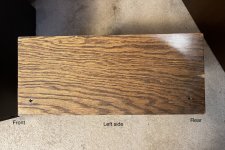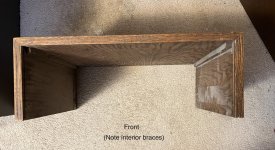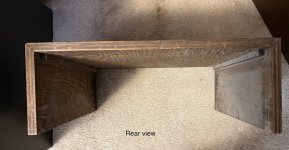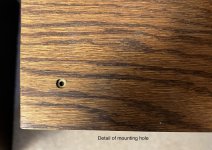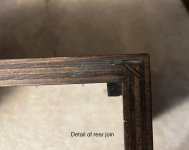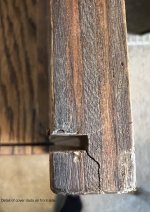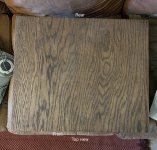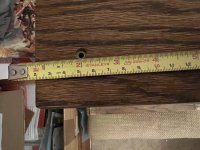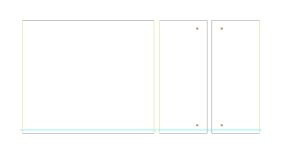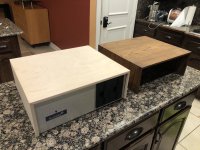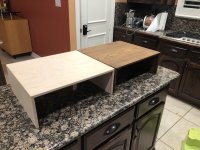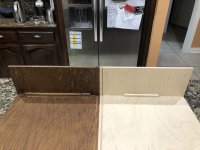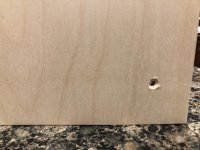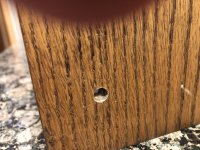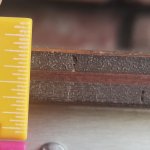Sorry I took so long to post this. As I mentioned, I've already recreated the Horizon cover, hoping to replace mine with a nicer hardwood cover. The original is 1/2" (nominal) plywood. Like
@Ttpilot reported, this cover is stained but otherwise unfinished. There's no veneer, but there aren't any glaring voids in the edges, and the staining job isn't bad. It's just really plain, stained, dull-looking medium-grade plywood. I have no reason to think that my cover is not original.
I have a Vcarve file to CNC the cover parts. I tried to attach it, but the forum software won't let me. VCarve format is useful because it allows the toolpaths to be embedded, and also most folks with access to CNC machines also have access to an up-to-date VCarve.
DXF format would be more generally useful, but my Vcarve copy is a makerspace edition that can't export DXF. I'll have to get to the Makerspace sometime this week to generate DXF files. If anyone here has an unrestricted copy of Vcarve 11, feel free to generate the DXF files and post them here.
Here are some photos. This is a test run using 1/2" Baltic birch plywood, on a CNC machine with a 90-degree 1.25" V-carve bit for the mitered edges and a 1/8" downcut endmill for everything else. It's critical to measure the thickness of the stock with a caliper to get the miters to come out perfect. Based on this test run, I've adjusted the design file to fix the groove thickness. I have included the counterbore in the file, but since all the milling was on the inside, I used a drill press with an end-mill to make the counterbores by hand.
I was hasty with the glue-up and could have done it better, which would make the mitered edges much cleaner. I have done nothing to finish the case, so it's kind of rough.
If anyone has a suggestion about how to post the DXF or VCarve files, let me know. Otherwise, PM me with your email if you would like them. I plan to post the design on github, like the Sol-20 sides, but I'd like to prove it out with a nice quality build first.

